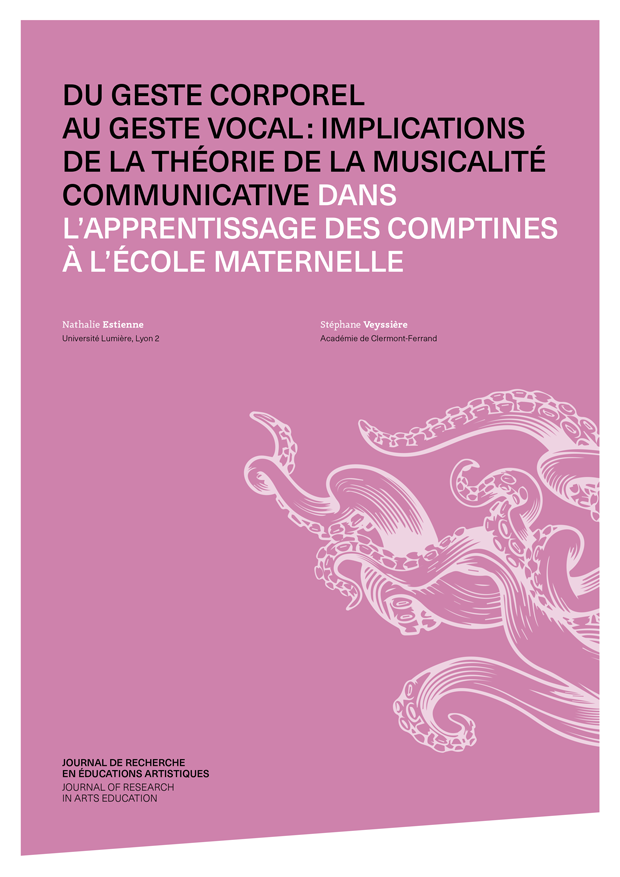Du geste corporel au geste vocal : implications de la théorie de la musicalité communicative dans l'apprentissage des comptines à l'école primaire
DOI:
https://doi.org/10.26034/vd.jrea.2024.4719Keywords:
nursery rhymes, temporal form, gesture, communicative musicality, school teachingAbstract
Nursery rhymes in France are presented in national programs as a strong support for language learning; this orientation is also widely attested by research (Bolduc & Lefevre, 2012). Our aim in this article is to approach the spoken nursery rhyme in its bodily and musical dimensions, by questioning the role of gesture in the fluidity of its learning in terms of memorization, motivation to say it, and student and teacher engagement during its interpretation. In the light of the concept of communicative musicality developed by Colwyn Trevarthen (2010), the article proposes a direct observational analysis of a teaching sequence learning nursery rhymes in two different age groups of the kindergarten, enabling us (1) to bring out characteristic elements of proto-narration, putting us in direct contact with the organizing role of gesture – not gesture paraphrasing the meaning or words of the nursery rhyme – but gesture which, through its rhythmic organization, structures and gives direction to the temporality of the narrative; (2) to support the idea that, in the rhythmic manifestation of time, the gesture associated with the voice is charged with intentions and emotions whose expressivity contributes to the transmission of the message. From the various examples we have chosen, it becomes clear that body or vocal gesture is not the faithful accompaniment of meaning, but rather a means of expressing it. This article seeks to bring out this coherence, intuitively sensed by the school teacher observed, by conceptualizing its practice.

Downloads
Published
Issue
Section
Categories
License
Copyright (c) 2024 Nathalie Estienne, Stéphane Veyssière

This work is licensed under a Creative Commons Attribution 4.0 International License.
The CC-BY licence authorises the sharing and adaptation of the document provided that the work is credited, a link to the licence is included and it is indicated whether any modifications have been made.


